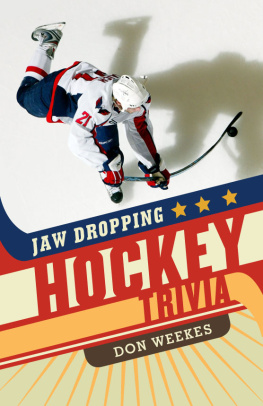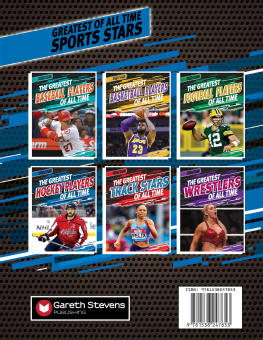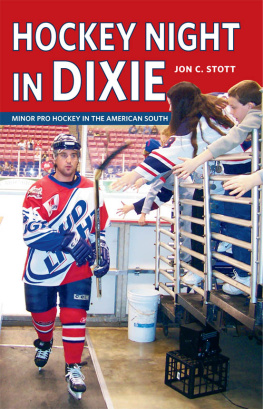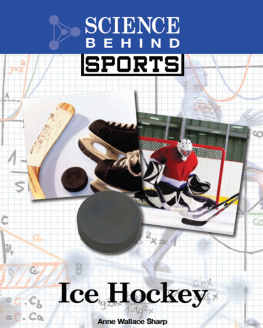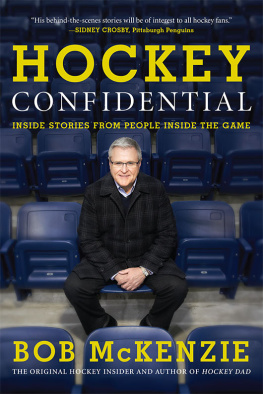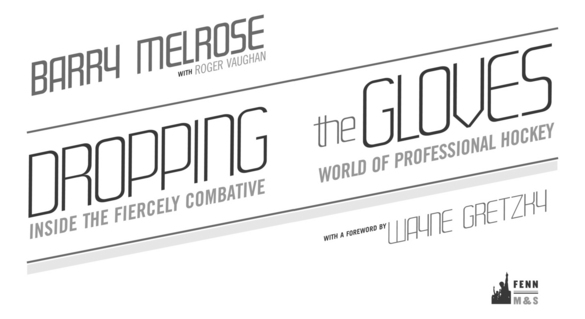Copyright 2012 by Barry Melrose and Roger Vaughan
All rights reserved. The use of any part of this publication reproduced, transmitted in any form or by any means, electronic, mechanical, photocopying, recording, or otherwise, or stored in a retrieval system, without the prior written consent of the publisher or, in case of photocopying or other reprographic copying, a licence from the Canadian Copyright Licensing Agency is an infringement of the copyright law.
Library and Archives Canada Cataloguing in Publication
Melrose, Barry
Dropping the gloves / Barry Melrose.
eISBN: 978-0-7710-5695-6
1. Hockey playersBiography. 2. National Hockey LeagueBiography. I. Title.
GV848.5.A1M44 2012 796.9620922 C2012-900974-1
We acknowledge the financial support of the Government of Canada through the Canada Book Fund and that of the Government of Ontario through the Ontario Media Development Corporations Ontario Book Initiative. We further acknowledge the support of the Canada Council for the Arts and the Ontario Arts Council for our publishing program.
Published simultaneously in the United States of America by McClelland & Stewart, a division of Random House of Canada Limited
P.O. Box 1030, Plattsburgh, New York 12901
Library of Congress Control Number: 2012932353
McClelland & Stewart, a division of Random House of Canada Limited
Suite 300
One Toronto Street,
Toronto, Ontario
M5C 2V6
www.mcclelland.com
v3.1
For Cindy and my two sons, Tyrell and Adrien
Thanks to everyone I ever played with,
and to everyone who played for me.
B.M.
For Kippy
Thanks to Kristina Pereira Tully, Tom Baker,
Mary P. Vogel, Hannah Blackwood, Jeff Fellows,
Michael Melgaard, and Jim Fitzgerald.
R.V.
Contents
Foreword
by WAYNE GRETZKY
I m glad Barry Melrose has done this book because not only does he really understand the game of hockey, no one talks about it better than Barry. Hes passionate about it. Anyone who has seen him on TV knows this. I had the privilege of listening to him in the dressing room and on the bench, up close and personal. That was even better.
Barry is one of the best coaches I ever played for. His idea of how the game should be played focused on speed speed that would highlight the talents of the skilled players. I was in total agreement with that. He and I had a meeting of the minds on day one. From then on, it was a pleasure playing for him. Sometimes it was an adventure, because Barry was always willing to try things. He never got on a guys case for being aggressively creative. That was lucky for me.
As a coach, Barry treated every player on the team as an individual. He made it a point to know each guy inside and out. He knew what each of them could do, what motivated them, and when to use them in the best possible way. As a player, you really cant ask for more than that.
As a TV presenter, Barry brings great insight and good humour to our game. In Dropping the Gloves, he takes you behind the scenes in junior hockey, the American Hockey League, and the NHL, as player and coach.
Barry and I are about the same age (actually, hes a few years older!). Im from a small town in Canada myself, and went through the same progression he did as a player. When I read this book, I had to chuckle, because he really got it right: the tough times, the good times, the wild and crazy stuff its all here. And I totally agree with his conclusion that our game is in great shape.
After reading this book, youll find yourself watching hockey more intently, and with a deeper appreciation of whats going on out there on the ice.
Nice job, guys.
Wayne Gretzky
LOS ANGELES, 2012
Introduction
There Is No Ball In Hockey
H ockey has little in common with the other four professional sports in North America. Unlike baseball, football, basketball, and soccer called football everywhere else in the world there is no ball in hockey. Unless you are a kid growing up in the frozen north, or directed into the sport at a very early age by relatives or close friends, you will not choose to play on the ice with a hard rubber disk that can easily break a bone or knock out teeth instead of on the ground with a round, much friendlier ball.
Hockey players who make the professional leagues get started early. They must make a strong commitment to the game and its traditions well before they are teenagers, making it their primary life focus until they retire. Hockey is more than a game. It is a way of life.
Barry Melroses hockey career is typical. Barry grew up in a small town in Saskatchewan, Canada, started skating as soon as he could walk, took his first stick to the face at age five, went through the Canadian junior hockey system, played eight years in the NHL, and coached at all levels before joining ESPN as the most knowledgeable and interesting analyst of the game.
I first met Barry at ESPN in the 1990s when I was working on a pre-Olympic program. It was a warm, summer day. Here came this big, friendly looking guy walking through the lobby in shorts and a polo shirt, wearing flip-flops, his hair in a mullet, with people greeting him, Hey coach. I got to know Barry.
During the 2011 NHL playoffs, I found myself astonished by the elevated quality of play I was seeing: the crisp passing, the 100-mile-an-hour shots, the size and speed of the players, the solid hits and brilliant plays, the extraordinary goaltending the overall frenetic pace of the game. Right then, it occurred to me that taking a close look inside this game would be both fascinating and illuminating. I called Barry because I couldnt think of anyone who loves the game more, who knows more about the game, and who can talk about it as eloquently. Barry Melrose is a triple threat the consummate hockey guy. Proof of that is in this book.
Enjoy.
Roger Vaughan
OXFORD, MARYLAND
Warriors on Ice
H ockey is a great chess match played on sharp steel blades on a sheet of ice 200 by 85 feet surrounded by a solid wall (the boards) four feet high. Its a game played by guys moving at thirty miles an hour with a round, hard rubber puck three inches in diameter by one inch thick that weighs six ounces and travels between ninety and 105 miles an hour when launched by a skilled player with a composite stick that flexes like a bow firing an arrow.
Hockeys origins can be traced back to pre-Christian era stick-and-ball games adapted for icy conditions. Among the early hockey players were the First Nation Mikmaq of eastern Canada. There are indications that the game they played on ice included the harsh, physical aspects of other Mikmaq sports, namely lacrosse. The result was a hard-hitting, violent contest, and that concept is still the backbone of todays professional game of hockey.
Lacrosse was invented by First Nation tribes as a way of training warriors. Theres a lot of lacrosse in hockey. Lacrosse is played on foot with sticks that have a head strung with netting to catch, cradle, pass, and shoot a hard rubber ball about the size of a tennis ball into a small (six-foot) square goal. Players wear shorts, minimal pads, protective gloves, and helmets. Its a full-contact game, one of the fastest team sports played on foot. There are ten men on a team including a goalie instead of the six players on a hockey team. Lacrosse combines tough, physical play with finesse, making it the dry-land version of hockey or vice versa, since lacrosse came first. Many of the great hockey players, including Wayne Gretzky, Brendan Shanahan, Joe Sakic, and Paul Kariya, played lacrosse during the off-season while growing up.


